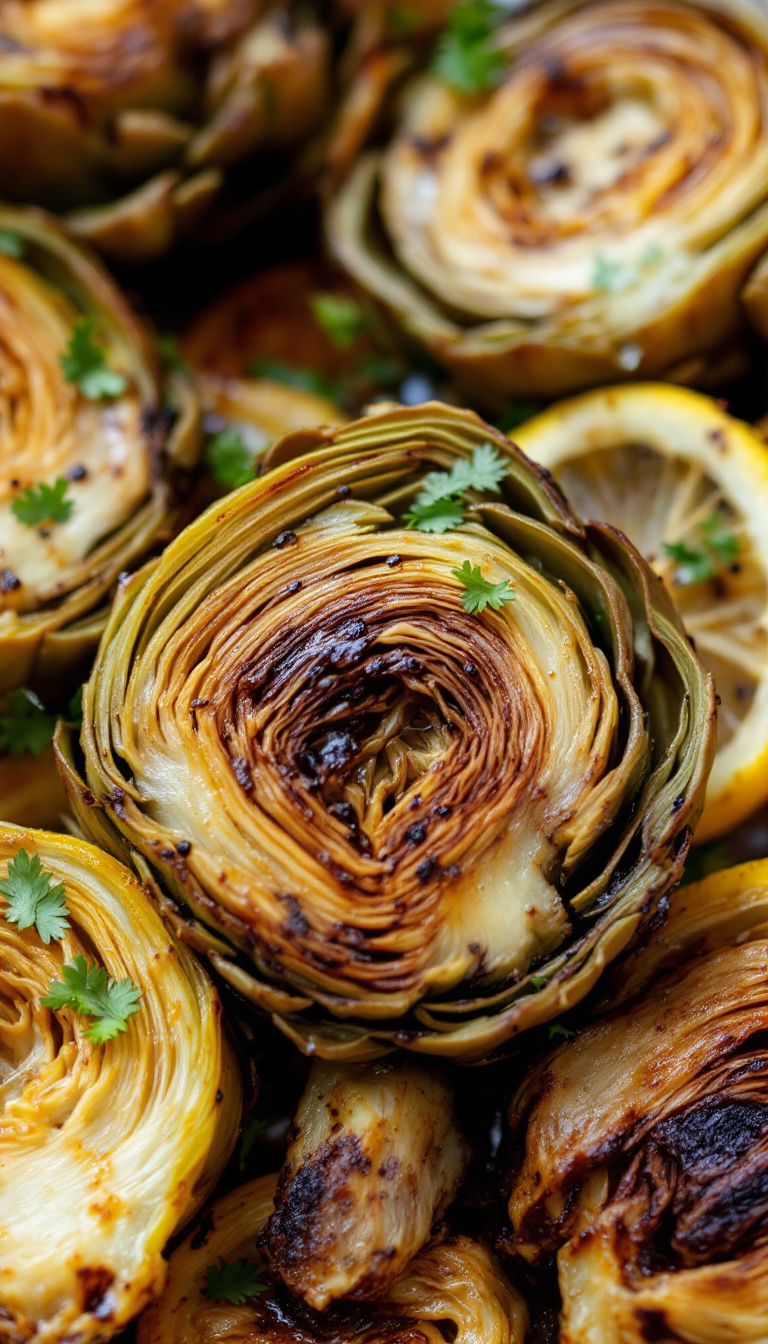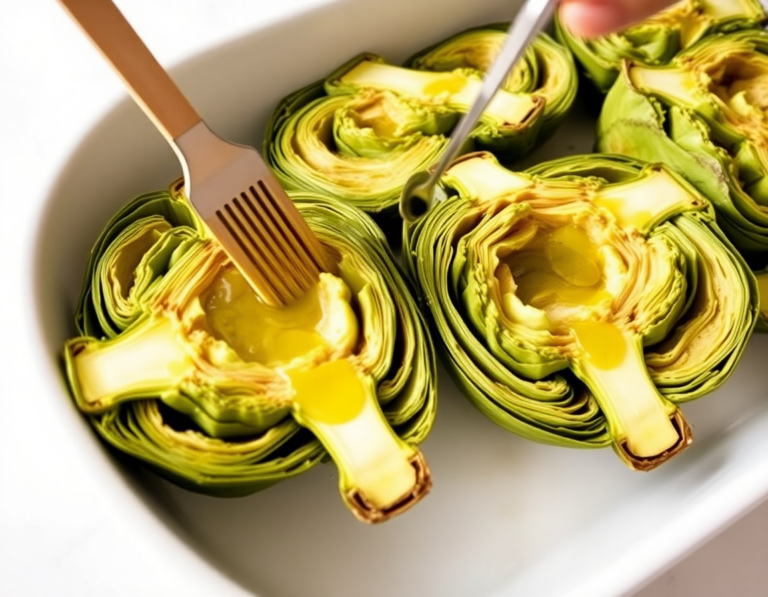
Artichokes—those quirky green globes that look like they belong in a medieval banquet—are a revelation when roasted. Picture this: the tangy zing of lemon mingling with the rich aroma of garlic, transforming these humble thistles into something extraordinary. I first stumbled upon this recipe during a chaotic family gathering, and it was a hit even amongst the picky eaters.
Steps
- Preheat your oven to 425°F (220°C).
- Begin by rinsing the artichokes thoroughly. Use a serrated knife to trim ½-1 inch from the stems and about 1 inch from the top of the leaves. If there are thorns on the leaves, snip them off with scissors.
- Slice the artichokes in half vertically. Quickly rub the cut sides with half of the lemon juice to prevent browning, then scoop out the fuzzy choke and small purple leaves inside.
- Rub the artichoke halves with the remaining lemon juice. Place them cut side up in a baking dish, then brush or rub olive oil between the leaves and on the outer leaves.
- Season the artichoke halves with breadcrumbs and your chosen spices, ensuring to get the seasoning between the leaves. Fill the cavity with garlic cloves, using about ½ clove per half.
- Flip the artichokes cut side down in the baking dish. Add 2 tablespoons of water to the pan to help keep them tender during cooking.
- Cover the baking dish tightly with tinfoil. Alternatively, wrap each artichoke half individually in tinfoil. This will trap steam and prevent drying out.
- Bake the artichokes for 30-40 minutes until the hearts are tender and the garlic is soft. Once done, remove from the oven and allow to cool slightly before serving. Enjoy!

Ingredients
- 2 whole fresh artichokes
- 2 tablespoons olive oil
- 1 lemon, juiced
- 2 cloves garlic (use ½ clove per artichoke half)
- 2 tablespoons gluten-free breadcrumbs
- Seasoning of choice (such as salt, pepper, garlic powder, or a spice mix)
- 2 tablespoons water
Nutritional Values
Calories: 496kcal | Carbohydrates: 56g | Protein: 12g | Fat: 28g | Saturated Fat: 4g | Polyunsaturated Fat: 4g | Monounsaturated Fat: 20g | Sodium: 244mg | Potassium: 1144mg | Fiber: 20g | Sugar: 4g | Vitamin A: 204IU | Vitamin C: 48mg | Calcium: 284mg | Iron: 8mg
FAQ
- Can I substitute the olive oil in this recipe?
- Yes, you can replace olive oil with any other neutral liquid oil, such as avocado oil. The substitution can be made in a 1:1 ratio.
- What parts of the artichoke are safe to eat?
- Most parts of the artichoke are edible except the outer leaves, which are fibrous, and the choke in the center, which can be a choking hazard.
- How do I select a fresh artichoke?
- Choose artichokes with thick, tightly closed leaves that squeak when pressed. They should feel heavy for their size. Some brown spots are fine, but avoid artichokes with separated leaves that feel light.
- Can I use a different seasoning for the artichokes?
- Absolutely! Feel free to use your favorite spice mix or a simple combination of salt, pepper, and garlic powder instead of the recommended seasoning.
- How should I store leftover roasted artichokes?
- Roasted artichokes are best when fresh out of the oven but can be stored in a sealed container in the refrigerator for 2-3 days. They are not suitable for freezing.
Tips
- Select Fresh Artichokes: Choose artichokes with tightly closed, thick leaves that feel heavy for their size. Fresh artichokes will often make a squeaking sound when you rub the leaves together. Avoid artichokes with separated, light leaves as they may be dried out.
- Prevent Browning: After slicing the artichokes in half, quickly rub the cut sides with fresh lemon juice to prevent browning. This step is crucial because artichokes brown rapidly when exposed to air.
- Season Thoroughly: When seasoning, make sure to rub olive oil and your chosen spices between the layers of leaves. This ensures that the entire artichoke gets flavored, not just the surface.
- Steam Bake for Tenderness: To keep the artichokes tender while roasting, cover the baking dish tightly with foil or individually wrap each artichoke in foil. This traps steam, preventing the artichokes from drying out.
Equipment
- Serrated knife
- Kitchen scissors
- Baking dish
- Tin foil (also known as aluminum foil)
- Cooling rack